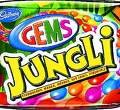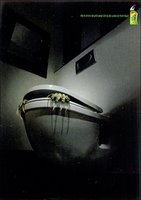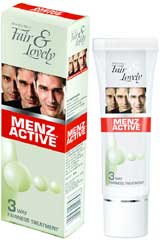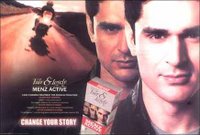Company: Cadbury's
Agency: O&M
Brand Count : 124
Cadbury's Gems is one of a kind product and brand. Unrivalled in all these years, Gems hold a special position in the consumer's mind. The brand which came to India in 1968 is still going strong.
I still remember the excitement I had ( when I was a kid) when my father slowly pushed the Gems through the pack and we used to guess the color of the button that is going to come out. The same excitement I could see in my daughter's face now after almost 20 years. I still buy Gems for my kid not because of the ads but because it is a brand I grow up with. ( sorry for being emotional).
Although 38 years old, Gems managed to stay relevant. A lot can be attributable to lack of competition and the unique taste that the product has. I will say that the brand is still relevant because those consumers of yesteryear's are now the parents and inevitably, Gems will figure in their favorite list of chocolates.
In the recent past I have seldom seen an ad of Gems. A major change in the Product Mix came in the early nineties when Gems reworked on its pricing and packaging strategy. It made a clever move by inventing new price points at Rs 5 making the brand more affordable. In the recent past, Gems pack is available for even Rs 2.
past, Gems pack is available for even Rs 2.
 past, Gems pack is available for even Rs 2.
past, Gems pack is available for even Rs 2.2006 saw the first variant of Gems in the form of Fruity flavours branded as Gems Jungli. The chocolate core has been changed to fruit flavours which is a major change in terms of the brand. Gems is known for its chocolate core with sugar coatings. With this variant, Gems is in a way moving away from its core .
Jungli has given the brand something to speak about. Now lot of promos have started aiming at the target audience ( kids). The ads are OK but not upto the creative standards of O&M. I bought one for my kid but the excessive coloring is a dampener. The color of the sugar coating seems to be too much and caused alarm as to how healthy the color is. The classic Gems do not have that much coloring or the color don't seem to be unhealthy.
I don't remember the old ads of Gems but looking at some of the blogs like Vishalpatel.com , the ads seem to position the brand along excitement. Even during the 80's there was Gems Bond a mascot for the brand. The old ads also talked about creating pictures using Gems. Those campaigns have put this brand firmly on the kids mind that is still making impact.Now Gems has been promoted using events and contests .
Gems have a problem at hand. How to make this brand relevant to today's kids. With lot of action in the confectionery market with lot of brands, Gems cannot rely on the old brand equity. May be the Jungli launch was to make the brand more visible in the segment now but are we not forgetting the classic Gems ?
Although positioned on excitement, right now Gems do not have a solid positioning. I agree that it is one of a kind and there has been imitations that have failed but success should not lead to marketing myopia.
Gems has to consolidate and nurture its core brand to be relevant to the much more dynamic and highly evasive consumer of today. Gems has to make sure that the excitement is nonstop.









